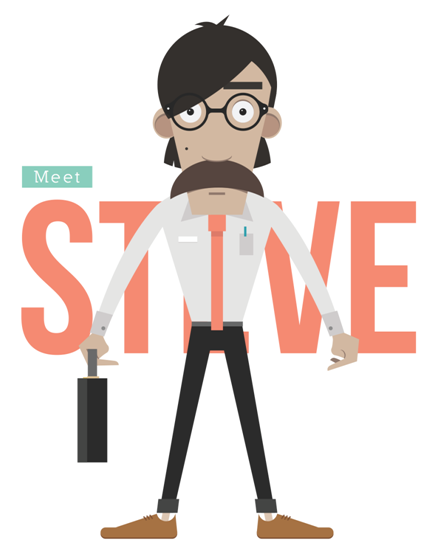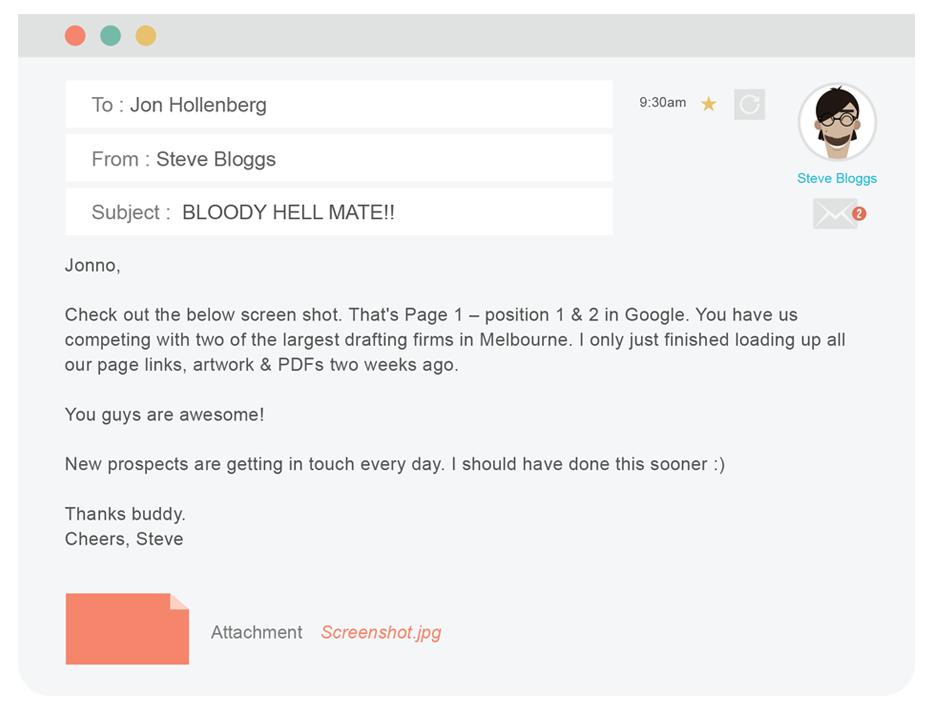Introduction
Introduction
There has never been a better time to operate a small business.
The internet has opened up the world to business owners, and every business now has the ability, the tools and platforms to create massive reach and compete with the ‘big boys’. In fact, there is no greater marketing weapon than a well-designed, high-converting website that contains valuable information about a business’s products or services. This has the ability to transform a business. And it is possible for everyone.
Take for instance Tania from Percy Handmade (https://www.percyhandmade.com). One very talented seamstress who started creating her beautiful bridal hair accessories from home at her dining room table. Being a small bootstrapping start-up, there wasn’t a lot of advertising money to go around. Paying for advertising in the traditional bridal market is dizzyingly expensive.
Instead, her approach was to meticulously document every thing in her world that inspired her creativity through her blog. Tania quickly became the authority in all things bridal accessories and shared her wealth of knowledge. Tania is a lover of ‘beautiful things’ and the blog served as a great platform to share this with the world.
After two years of content generation, her website now:
- Generates over $10k of sales per month
- Tania is seen as a leader in the bridal industry
- She is asked to regularly contribute to other notable publications and blogs.
That said, understanding the bigger picture of website strategy and how to execute it can be fraught with danger for the novice. The technology is confusing; it constantly changes and the ‘rules’ of what you’re allowed to do seem to change often too. Take for instance Google’s Panda and Penguin algorithm updates. No, we aren’t talking about animals at the zoo. These are updates to the Google ‘logic’ which they use to determine where your site ranks in relation to your competitors. It penalises the sites that ‘stuffed’ in keywords and benefited ones that provided lots of great content around their service and product offerings.
Having your site found in Google has the ability to change your fortunes. I have seen it, over and over again. What small business owner wouldn’t want copious amounts of highly qualified, targeted prospects ready to buy being delivered to their doorstep?
Without clear direction, the right tools and good advice to help you realise your potential online, a wrong choice can be costly in both time and money.
Meet Steve
Steve is a hardworking, honest bloke who is really good at what he does. He’s the sort of guy you can always rely on. A likeable man who does what he says he is going to do, on time, every time.
Steve is a draftsman who makes technical drawings and plans for building projects, residential home constructions and extensions. A real details sort of person. Now, if you struck up a conversation with Steve down at the local pub, he would much prefer to talk about football than work. But, all in all, he loves what he does and he is pretty darn good at it.
Running a successful business
Steve eventually got sick of ‘working for the man’ and started his own drafting practice. “Why should I stick around making my bosses rich?” he thought. He took the plunge, registered a business and he was off. A few hiccups and learnings along the way, but, to Steve’s credit he managed to make a real go of it. Mates and old work contacts threw him jobs which kept him going in the early stages of the business. He built up more and more momentum in the first year of business and was able to make a reasonable living for himself.
Didn’t need marketing?
About a year in, Steve got a little complacent and took his eyes off the ball. Couple this with sales drying up due to a downturn in the building industry, and poor old Steve was hurting financially. People were going broke left, right and centre and not paying their invoices. Steve had no work and was struggling to pay his bills. Something drastic needed to happen to inject some life into his business.
The train wreck
Steve called me in a little bit of a fluster. “How quickly can you build a website?” he asked. He had never really taken marketing seriously and had a very cheap $500 website put together in the early stages of the business by a low-cost provider. Unfortunately, it looked cheap, didn’t generate any enquiries and he was now paying the price.
Each website is individual
“How long is a piece of string?” I replied. We spoke for about half an hour and Steve revealed a raft of devastating problems that were having a profound impact on his business. His website had been ‘slapped’ in the latest update of the Google search algorithm (in simple terms, his site now couldn’t be found on Google). His website visitors had plummeted. Before, it used to rank for keywords such as ‘drafting Melbourne’ and ‘mechanical drafting’. It turns out the old site had been over-manipulated by having keywords ‘stuffed’ throughout the site and Google had wiped him off the face of the search engine. He was invisible. To compound this, the people who could find the site couldn’t get in touch. The contact form on his website had mysteriously stopped working. And, to top it off, he couldn’t get in touch with the original website designer who had fallen off the face of earth. In Steve’s words – “a complete screw up.”
A big job ahead
Steve confessed that sales were down $100,000 from the year before and the website had played a big role in this. I quietly thought to myself, “Wow, we have got our work cut out”. Steve was panicking and was hoping he could turn the situation around before things got any worse.
Steve jumped on a plane and came to meet me face-to-face two days later. (Having been burnt one too many times, he is the sort of guy who likes to eyeball people and check out their work environment to see if they can be trusted.)
Plan to succeed
We spent two hours digging deep into his business, understanding his target market and formulating a web strategy. (Being a draftsman, he is big on plans.) The centrepiece was to be a beautiful WordPress lead-generation website. The design was going to be crucial as Steve is a technical designer – a man obsessed with symmetry, proportion and grids. In Steve’s words “ugly isn’t an option – just keep it clean and simple.” I liked his vision.
His next big question was, “How will people find this website and send me work? This had better get the phone ringing otherwise this whole exercise is pointless!”
Content is now king
I replied that quality content was going to play a big part in the strategy. I really emphasised that he would need to invest the time and effort into building great content revolving around his products and services. He would need to ‘own’ the first page of Google in his industry. I saw Steve’s mind taking in another thing to add to his already long to-do list. “Bloody hell – more work!” After hammering the point home for the next 20 minutes, I think it sunk in.
Steve and I covered off other traffic channels such as his social media, email marketing and Google Advertising. These would also play a part in reviving the struggling business and getting the leads, enquiries and dollars rolling in again.
Steve left that day with a bit more of a spring in his step. We stuck to the plan and delivered that new, good looking website in a few weeks. It wasn’t perfect considering the tight timeframe, but it was a good design solution that gave Steve the tools and the platform he needed to stir up some dust.
It takes upkeep
After the initial website was launched, it remained stagnant for around six months. His plan was to start blogging every week and share his wealth of industry knowledge. However, after our meeting Steve managed to turn his dire financial situation around and landed some more work. He got caught up in running his business and fighting fires, which meant no time was invested in maintaining his website. There were so many things that he could have done – adding new projects, case studies, how to’s, blog posts about technical design solutions and more. Instead, tumbleweeds rolled through the deserted site.
Content pays off
It wasn’t until six months later when our web design team was going through some analytical reports for his website that we noticed a big spike in traffic. I dug deeper and discovered that Steve had found some spare time and had spent weeks adding new pages to his site. He had created around 100 pages of valuable content around all the projects he had been working on, setting up some frequently asked questions, and added some new blog posts.
A few quick Google searches showed that the business was sitting on the first page of Google for keywords such as ‘engineering drafting’, ‘building plans’, ‘workshop drawings’, ‘drafting service Melbourne’. Traffic had spiked to over 60 unique visitors a day – a 100% increase – and this was all due to his ranking in Google’s search results.
Not a week after Steve finished loading that content, he sent me this email:

Steve was one happy camper (and he now sleeps a lot better at night).
A new website, better content pays off
After this, the leads and enquiries kept flowing in. No longer was he out chasing work, it showed up in his email inbox every morning from enquiries through his website. Steve got so busy he raised his prices. He lost a few of the dud clients along the way, which gave him more time to focus on his quality ones. All it took was a well-executed plan and a bit of hard work, and Steve now has more work than he can poke a stick at and can be very selective about who he works with.
He is now seen as an authority in his niche. The go-to ‘drafting guy’ in Melbourne. The other big firms hate him as their clients now prefer to work with him.
So what is in it for me?
Having built and delivered over 1,000 websites for clients around the world, I’ve seen the impact a high-performing website can have on a business. I’ve worked in the online marketing world for 17 years, delivering websites for brands such as Qantas, Jeep, Chrysler, Dodge and Currumbin Wildlife Sanctuary (plus hundreds of smaller businesses).
Based on this experience, I know that even with a modest budget and limited time success is possible for every small business owner. However, it’s close to impossible to achieve this on your own.
That’s where this book comes in. Love at First Site will equip you with the same tools, skills and confidence to punch well above your marketing weight. It will guide you through the website planning, construction, handover and ongoing maintenance phases. Any business can apply this methodology to turbo charge their online activities.
The catch
Unfortunately having a good looking website is not enough to compete online anymore. You can’t just knock up a website and expect it to appear in the top position in Google. The search giant has rewritten the rules time and again to emphasise two things above all others – great quality content and a good user experience. It’s as simple as that.
Beyond building the website, business owners now need to become publishers and news producers. This paradigm shift is a difficult one for the average busy person to accept and implement, but the benefits are huge.
The good news for good businesses
The potential return on a well-executed web and content strategy can be truly explosive. As demonstrated by Steve, it can turn around a struggling business by attracting more leads and sales, pulling in better clients and establishing you as an authority in your industry.
The hardest thing is knowing the best approach.
I have turned around a business whose sales had slumped and who were ready to shut their doors and walk away. A nice looking website and some quality content was all it took to turn the business’s fortunes around.
You CAN do it, here’s how:
This book contains a simple, no-nonsense framework that gives you a clear pathway to a website that works for your business. More importantly, I’ll show you how to keep your website generating results, month in and month out. This process will work for any business owner who wants to get a return on their investment.
So what prevents every business from having a killer website?
- They don’t know where to start
- They can’t find a reliable web designer to partner with
- With so many platforms available, they don’t know the best tool for the job
- They use poor design and layout with no focus on conversion (prompting visitors to get in touch)
- They have websites that are invisible in the eyes of Google
- They lack confidence in driving the website due to little skills or training
- They don’t understand the potential return on investment so don’t make the time to produce great content (that is, they launch a website and forget about it).
What is the best approach to overcoming these challenges?
There are 7 key steps in the website design process that, if done correctly, will ensure the motivated small business owner not only builds a beautiful website but gets found by Google.

You are sitting on a mountain of knowledge which needs to be shared with the world in the form of great quality content focused on your business or industry. Business owners need to understand that Google only wants great content. Based on this premise, we can formulate a strategy for success focused on market leadership.

You’re busy. And, while you’re an expert in your field, you probably don’t have the time or expertise to build a great website yourself. Sure, you might have a 14-year-old nephew who knows HTML, but deep down you understand that building a website requires a very specialist set of skills. Enter the web designer. But no two web companies are the same – some are horrible; some are great. Selecting a good digital agency as a strategic partner can be difficult and fraught with danger. However, knowing the right questions to ask can save you lots of heartache (and money) further down the track.

With so many platforms and different opinions it can be difficult to source the best tool for the job. The key is to use an open-source content management system (CMS) that is easy to use and doesn’t lock you into any one provider. This step will give you the ins and outs of the best CMS on the market, so you can rest assured that you’re on the right path.

People form an opinion about a company based on the signals it conveys. On the web, the window of opportunity is limited, with visitors choosing whether to stay or move on in less than three seconds. Good design is good for business and, in a competitive online environment, you have to make an impact.

A website gives you a platform to create and distribute content at virtually no cost. Google only wants great quality content and rewards websites that take the time and effort to educate around their respective products and services. This pulls prospects towards you and positions you as an authority.

Now that your website has all this great content, you need to ensure it has the best possible chance of getting found by the search engines. Sharing via social platforms, email marketing and Google Remarketing will create other traffic sources for your website. Measuring the success of these efforts is critical to being able to refine and optimise your site in the future.

Here you can ensure that your website is given the best possible chance to succeed by checking all technical components are completed, such as installing Google Analytics and Webmaster tools. In addition, you want to protect your investment and ensure you have a backup plan if your website is ever lost, hacked or your web designer falls off the face of the planet. This step will give you that security.
Take charge, know how to do it
Love at First Site is a definitive step-by-step guide to help you get results from your online investment. I share my experience and knowledge, based on the thousands of websites I’ve built, and this will be the difference between an ordinary website and one that actually gets results.
However, it’s important to remember that building a great website usually takes time. From start to finish, the average project can take four to six weeks. Note – this book is not a how-to guide on building a website yourself, so it doesn’t delve into minute details about this process. Rather, it gives you a strategic overview to better understand this process. It will give you the knowledge you need to get the most out of your web design partner to ensure a multiple return on your investment, through implementing a website that gets results for your business.
Where I can, I’ll refer you to the appropriate places where you can dig deeper. In addition, there are helpful checklists at the end of each chapter to ensure you don’t miss anything.
Conventions
Throughout the book, I’ve used visual conventions to illustrate specific concepts and ideas:

Oi! Take Note – This is a gold nugget right here.

Download the Love – Blank templates you are free to use and distribute. You can get these all here: https://www.loveatfirstsite.net/download
Who should read this book?
Steve is a fictional character. A culmination of many clients problems and challenges witnessed first hand over the years of building websites. Like Steve, the average small business owner understands the importance of the web, but doesn’t really know where to begin. This book is aimed at those small business owners – the decision makers in charge of the marketing budget. Maybe you’re a hands-on technician who wears many hats in the business. Maybe you’re the head of a bigger organisation and have a few more layers, including a marketing resource you can handball this to. However, the common thread is you want a roadmap on how to get the results you want online.
That said, I have assumed some prior knowledge when writing this book, which means that you:
- can turn on a computer and connect to the internet
- have a basic understanding of website conventions and are able to navigate through websites to find what you need on a day to day basis.
Check! You are already one step down the path to becoming an authority in your field through a website that not only looks great, but gets the results you want. A high performing website has the ability to transform any business, and this book is your key to creating one.
- Web Design Gold Coast
- Web Design Brisbane
- Web Design Melbourne
- Web Design Sydney
- Web Design Bundaberg
- Web Design Cairns
- Web Design Hervey Bay
- Web Design Mackay
- Web Design Rockhampton
- Web Design Toowoomba
- Web Design Townsville
- Web Design Sunshine Coast
- Shopify Gold Coast
- Facebook Ads Agency Gold Coast
- SEO Packages Brisbane
- SEO Packages Sydney
- SEO Packages Perth
- SEO Packages Melbourne
Five by Five acknowledges the Traditional Custodians of this land. We pay respect to their Elders past, present and emerging for their wisdom, teaching and cultural knowledge and extend that respect to other Aboriginal and Torres Strait Islander peoples.
Five by Five are based on the Gold Coast and provide great looking high performing websites for businesses Australia wide including Brisbane, Sydney, Melbourne, Adelaide, Canberra, Perth – all regions and cities of Australia.





